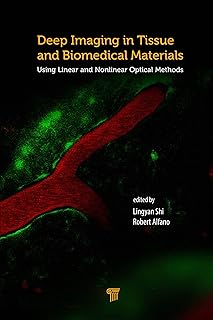In the realm of deep tissue imaging, optical coherence microscopy (OCM) plays a pivotal role, blending the principles of optical coherence tomography and confocal microscopy to achieve high-resolution, label-free imaging. The 1300 nm spectral band is commonly used for visualizing structures in deep, scattering tissues due to its low scattering coefficient. However, recent advancements have shed light on the potential of the 1700 nm spectral band, offering enhanced penetration depth and image contrast.
Studies have shown that utilizing the 1700 nm spectral band can significantly improve signal-to-background ratio (SBR) in deep tissue imaging compared to the 1300 nm band. While both bands exhibit similar degradation in lateral resolution with increasing imaging depth, the 1700 nm OCM system showcases approximately 6-times higher SBR than its 1300 nm counterpart. This enhancement is attributed to the lower scattering efficiency in the 1700 nm band, reducing light loss and improving signal collection in turbid tissues.
To validate the benefits of the 1700 nm spectral band, a hybrid 1300 nm/1700 nm SD-OCM system was employed to conduct comparative imaging studies on brain samples. By observing a reflective resolution test target through tissue phantoms of varying thicknesses mimicking brain cortex tissue, researchers confirmed the superior SBR of the 1700 nm OCM system. Furthermore, high-contrast deep tissue imaging of a mouse brain at a remarkable depth of 1.8 mm was successfully demonstrated using a high-resolution 1700 nm SD-OCM system.
The results not only underscore the imaging advantages of the 1700 nm spectral band but also hint at its potential for various biomedical applications requiring detailed visualization of turbid tissues. By harnessing the large penetration depth and high SBR capabilities of the 1700 nm OCM system, researchers can delve deeper into the intricacies of biological structures with unprecedented clarity and precision.
In conclusion, the quantitative assessment of SBR and lateral resolution in deep tissue imaging with the 1700 nm OCM system showcases its prowess in delivering superior image quality, setting the stage for cutting-edge biomedical research and diagnostic applications. The continuous evolution of optical imaging technologies holds promise for unlocking new insights into the complexities of biological tissues, paving the way for groundbreaking discoveries in the field of life sciences.
📰 Related Articles
- Study Reveals Effective Thyroid Imaging System for Disease Detection
- RadNet Enhances Imaging with See-Mode AI Acquisition
- Innovative Photoacoustic Imaging Enhances Breast Cancer Lymph Node Prediction
- Innovative Needle Guidance Device Enhances Medical Imaging Training
- How Molecular Breast Imaging Technology Improves Cancer Detection for Dense Breast Tissue






